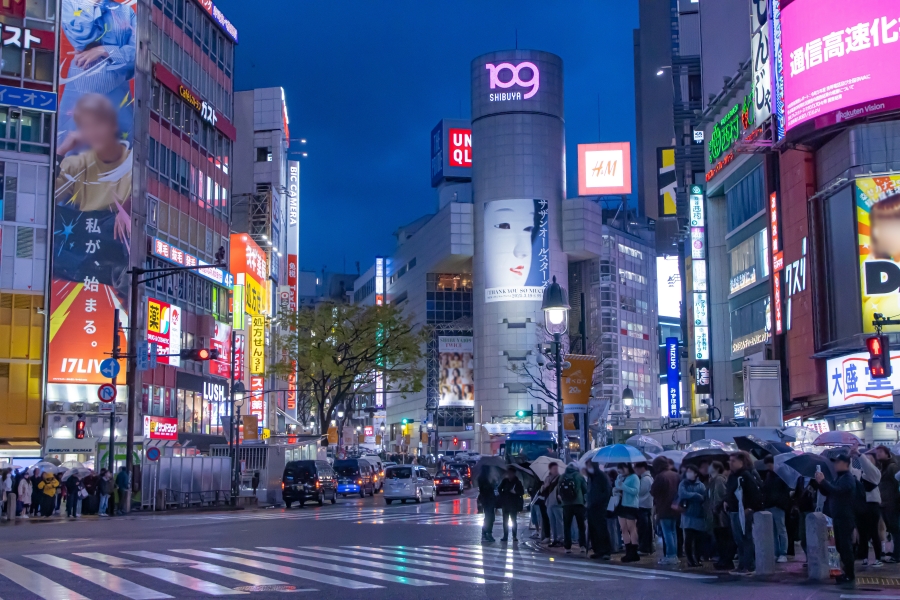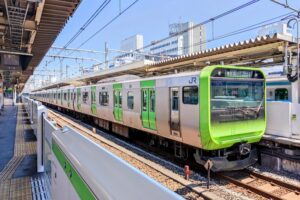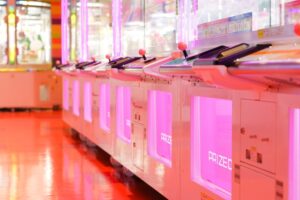The Most Visited Districts in Tokyo by Foreign Tourists

Tokyo is not only Japan's capital but also one of the most exciting urban destinations in the world. While individual attractions like teamLab Planets and Senso-ji draw large numbers of visiters, many travelers also choose Tokyo for the unique character of its neighborhoods.
Based on an official inbound tourism survey released in 2024, here are the top districts in Tokyo by visitation rate among foreign tourists.
1. Shibuya — 67.1%
Shibuya continues to dominate as the most visited area in Tokyo. Known worldwide for the Shibuya Scramble Crossing, the loyal Hachikō statue, and its vibrant youth culture, Shibuya attracts more than two-thirds of foreign tourists. The area’s shopping streets, nightlife, and easy access to Harajuku and Shinjuku further boost its appeal.
2. Shinjuku & Okubo — 57.4%
The second-most visited district combines the neon buzz of Kabukichō nightlife with the green tranquility of Shinjuku Gyoen National Garden. Okubo, also known as Tokyo’s Koreatown, has become a hotspot for K-pop fans and food lovers, adding to the area’s international flavor.
3. Ginza — 50.1%
Tokyo’s luxury shopping district ranks third, attracting half of all international visitors. Ginza offers high-end boutiques, flagship department stores, and some of the city’s best fine dining. It is also home to cultural landmarks like Kabuki-za Theatre.
4. Asakusa — 45.7%
Asakusa remains Tokyo’s top destination for tradition. With the famous Sensō-ji temple, Nakamise shopping street, and rickshaw rides through old Tokyo streets, the district offers an authentic connection to Japanese history and spirituality.
5. Akihabara — 39.8%
Known as the mecca of anime, manga, and electronics, Akihabara draws global fans of Japanese pop culture. From maid cafés to specialty stores filled with collectibles and gadgets, Akihabara remains a must-visit for otaku culture enthusiasts.
6. Ueno — 37.4%
Ueno is celebrated for its cultural institutions, including the Tokyo National Museum, Ueno Zoo, and art galleries. The vast Ueno Park becomes especially popular in spring, when cherry blossoms attract both locals and tourists.
7. Ikebukuro — 32.9%
Ikebukuro has risen as a major shopping and entertainment hub. With Sunshine City, large electronics retailers, and its own anime culture hotspot (Otome Road), the district appeals to families, young travelers, and pop culture fans alike.
8. Harajuku — 30.5%
Harajuku is synonymous with Tokyo street fashion and youth trends. Takeshita Street is lined with quirky shops and crepe stands, while Omotesando offers stylish boutiques and cafés. It is also home to the Meiji Shrine, one of Tokyo’s most important Shinto sites.
9. Roppongi — 25.8%
Roppongi attracts visitors with its international nightlife scene and cultural landmarks such as Roppongi Hills and Mori Art Museum. Its mix of contemporary art, luxury shopping, and clubs makes it a cosmopolitan playground.
10. Odaiba — 21.6%
Built on reclaimed land in Tokyo Bay, Odaiba is a futuristic entertainment island. It features shopping malls, a life-sized Gundam statue, and attractions like teamLab Planets and Miraikan (National Museum of Emerging Science and Innovation).
Conclusion
According to 2024 official survey data, Shibuya firmly holds the No. 1 spot as the most visited district by international tourists, followed by Shinjuku, Ginza, and Asakusa. Together, these areas highlight Tokyo’s unique balance of tradition, modernity, and global culture, ensuring that the city remains one of the world’s most dynamic travel destinations.


